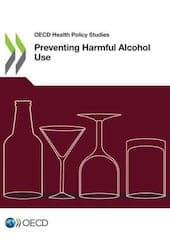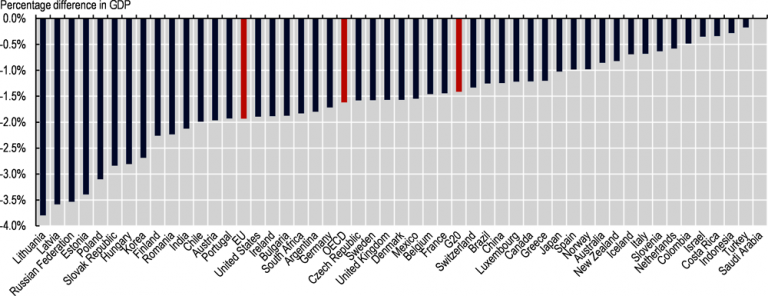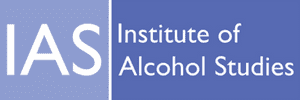
Prior to COVID-19, one in three adults engaged in binge drinking at least once in the previous month, and one in five teenagers experienced drunkenness at age 15 in OECD countries. During the 2020 COVID lockdowns, people have changed drinking habits shifting places of consumption from bars and restaurants to home. Some decreased their alcohol consumption and others increased, for instance to cope with stress. Women, parents of young children and individuals with depressive and anxiety symptoms were among those reporting the highest increase in alcohol consumption. Problems associated with harmful alcohol consumption, such as domestic violence, also increased.
Harmful alcohol use is a pressing public health issue and has important consequences for individuals, society and the economy. This is what we show in the new OECD report ‘Preventing harmful alcohol use’, focussing on 52 OECD, European Union (EU) and Group of 20 (G20) countries.
Harmful alcohol use is a key driver of non-communicable diseases – such as alcohol dependence, cancer and liver cirrhosis, as well as injuries and premature deaths.
The OECD estimates that over the next 30 years, medical conditions caused by harmful alcohol consumption will make overall life expectancy about 1 year lower than it would be in the absence of harmful alcohol consumption.
This estimate varies widely across countries, depending on the level of alcohol consumption and the provision of health care services for those in needs. The largest reductions in life expectancy are estimated in Central and Eastern European countries. As a comparison, preliminary data from Eurostat suggest that, in 2020, the COVID-19 pandemic was associated with a 0.8 year drop in life expectancy across 26 EU Member States.
Alcohol-related conditions have a significant cost to people and societies
Medical expenses to treat alcohol-related conditions equal about 2% of total health expenditure each year. At the same time, people living with these diseases are less likely to be employed, and when they work, they are less productive at work. Such labour market effects are expected to make GDP 2.1% lower than it otherwise would be on average across countries annually over the next 30 years. The greatest GDP impact (up to 4.5%) is predicted in countries such as Latvia, Lithuania and the Russian Federation (Figure 1).
Figure 1. The impact of diseases caused by harmful alcohol consumption on GDP

Source: OECD, Preventing harmful alcohol use, 2021.
The policy landscape to tackle harmful alcohol consumption presents some gaps and areas of improvement
Specifically, the report identifies four areas in which advancements can make a significant difference.
- First: only about one third of the surveyed countries have both a written national policy to tackle harmful alcohol consumption and an action plan, which delineates how to implement the policy actions. These documents represent the masterplan for action.
- Second: the majority of countries do not have the most effective regulation of advertising, particularly in the case of social media. This is particularly important during COVID times when children and youngsters have been spending more time than ever on the internet.
- Third: policies to tackle cheap alcohol, which is disproportionally consumed by individuals with harmful patterns of alcohol consumption, are still not fully implemented by countries. For instance, minimum unit pricing, that specifically set a “floor price” for an alcohol unit, has been implemented in only a few OECD countries such as Canada (at the subnational level) and Scotland and Wales.
- Fourth: there is a need to strengthen primary care services for patients with alcohol dependence and alcohol use disorders. For example, data from Europe and the United States show that less than 10% of people with harmful patterns of alcohol consumption receive support from primary care services (e.g. screening and brief intervention).
Closing the gap on these key areas and preventing harm to others through more policing is an excellent investment for countries that improve health and boost the economy
The OECD evaluated a comprehensive policy package that includes: strengthening restrictions on alcohol promotion to children; better police enforcement to prevent alcohol-related traffic injuries; expanding coverage of counselling for patients with harmful alcohol consumption; and strengthening price policies to limit the affordability of alcohol, particularly for cheap alcohol.
Such a policy package would avoid 8.5 million cases of alcohol-related diseases every year across the 48 countries studied. Countries would also save about 28 billion USD per year, which is roughly the equivalent of the healthcare budget of Israel. Overall, for every USD invested in this policy package, 16USD will be returned in economic benefits, due to improved productivity, making a clear economic case for implementing effective policies.
Written by Marion Devaux, Health Policy Analyst, and Michele Cecchini, Lead Economist for Public Health, OECD
All IAS Blogposts are published with the permission of the author. The views expressed are solely the author’s own and do not necessarily represent the views of the Institute of Alcohol Studies.
